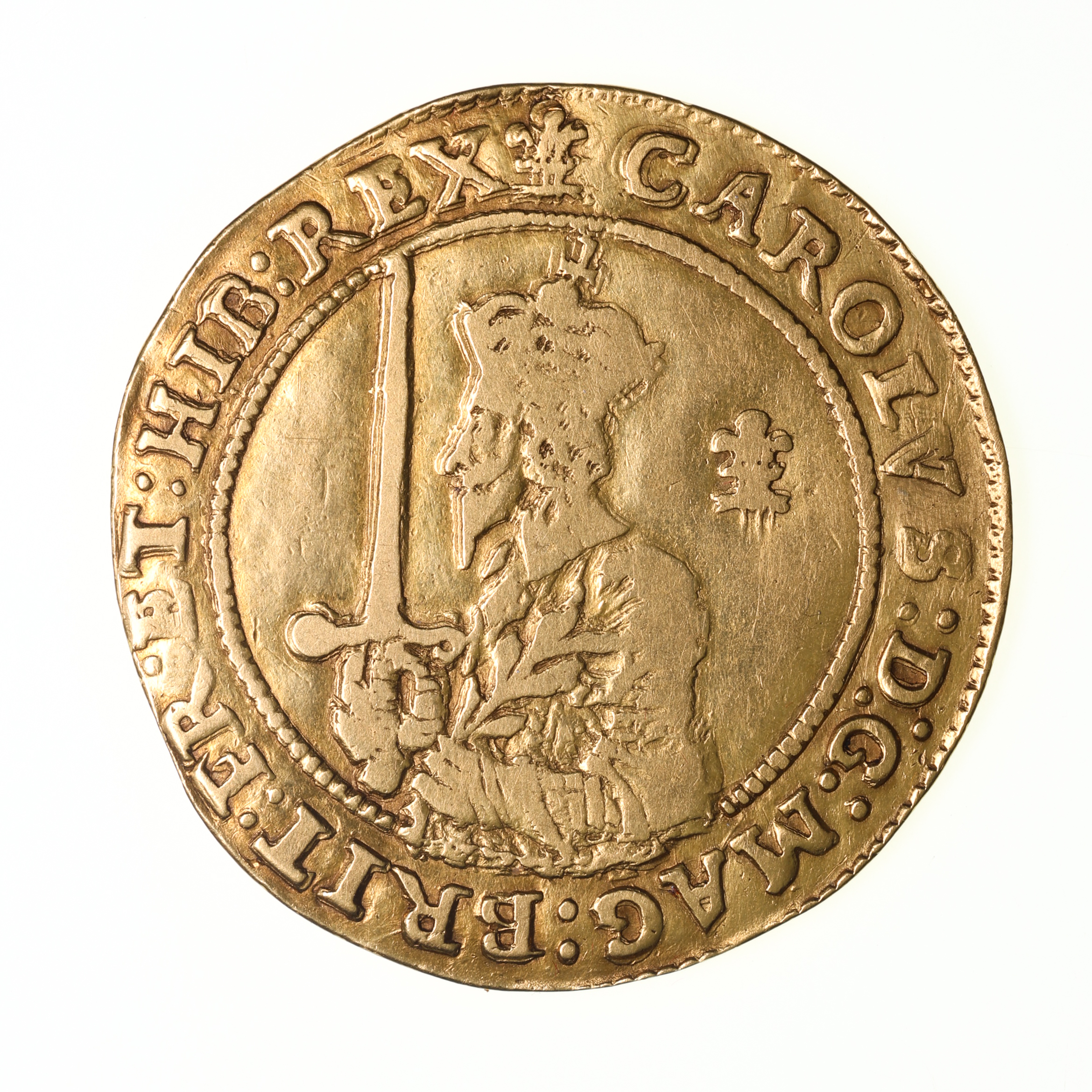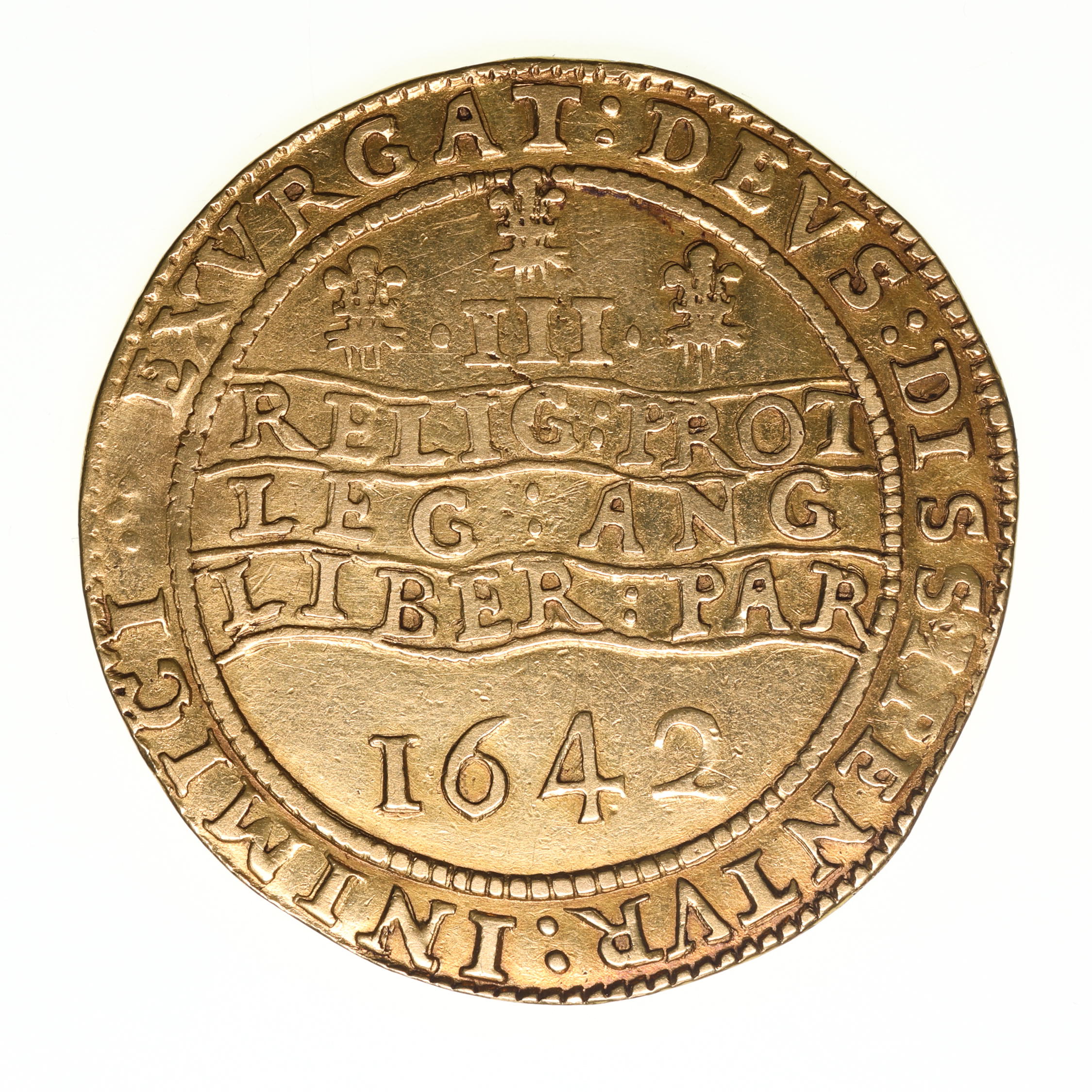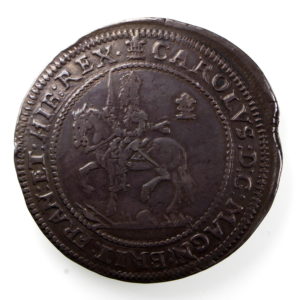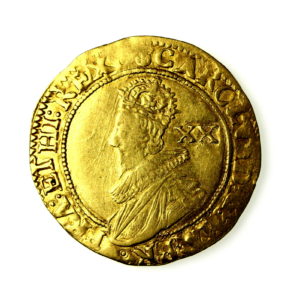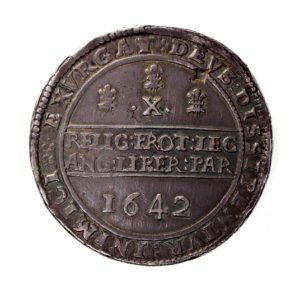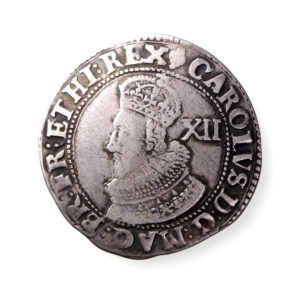Charles I AD 1625-1649 Gold Triple Unite 1642 Oxford Provincial Issue English Civil War
£12,500.00
Charles I AD 1625-1649 Gold Triple Unite. AD 1642
Oxford, Provincial issues, struck during the English Civil War.
43mm, 26.38g, S2724
mm. plume
It is estimated that 25 different combinations exist in a mere surviving sample of some 250 pieces. This includes the three dates for which these coins were struck (1642,1643,1644). The gold Triple Unite represents the largest hammered gold denomination ever produced in the English series of coinage at a face value of three pounds. Such coins were produced at a time of duress, when the King had moved his Capital from London after the Battle of Edgehill, to the Royalist Universities of the City of Oxford, where he made a state entrance on 29th October 1642. The King lived at Christ Church, with the Queen installed at Merton; the Royalist Parliament met in the Upper Schools and Great Convocation House; the Privy Council at Oriel; and the Mint worked at New Inn Hall from the 3rd January 1642/3. These magnificent gold coins were struck for only three dates, 1642, 1643 and 1644 with some variation as there are 24 different varieties of obverse and reverse across these three dates, plus an extremely rare 1642 piece struck in Shrewsbury. When the Triple Unite was introduced as currency it was more than double the value of any previous English coin produced, and would have been seen as a magnificent piece of propaganda against the Puritan cause, to show that though the King had moved from London, Oxford was a rich alternative City. Perhaps the King was inspired by similar large extremely rare Scottish coins produced some 70 years earlier by his Father, King James VI of Scotland in 1575-6. The King had introduced the first regular newspaper printed in Oxford the “Mercurius Aulicus” from the 1st January 1642/3 (1642 old calendar style), and the introduction of the new Triple Unite as currency is featured in the edition produced around the 18th February 1642/3, and features a woodcut illustration of the new denomination (dies 1/S1 combination). This is thought to be the first ever illustration of a current coin of the realm in contemporary print. As the new year in the old calendar style commenced on the 25th March this means all the 1642 dated coins were produced in only a very limited time from mid-February to probably April at latest when 1643 dated pieces were no doubt produced. It seems the issue of this great coin ceased with the great fire of Oxford as reported in the same newspaper of 6th October 1644, as there are only three reverse types known of 1644. The abbreviated obverse legend translates as “Charles, by the Grace of God, King of Great Britain, France and Ireland. The abbreviated reverse Declaration translates as “The religion of the Protestants, the Laws of England, the Liberty of Parliament”. The outer reverse legend translates as “Let God arise and let his enemies be scattered” An extraordinary piece of English history rarely available to private commerce and a pleasure to own. If you are interested in buying or selling a coin of similar importance please contact our specialist John Philpotts at sales@silburycoins.com and he will be happy to assist.
Charles I AD 1625-1649
Born the second son of James I Charles became heir upon the death of his elder brother Henry in AD 1612. After an unsuccessful attempt to marry him to the Infanta of Spain Charles married the Catholic Henrietta Maria of France in AD 1625. Charles strongly believed in the divine right of kings and upon his accension to the throne in AD 1625 it was not long before he quarrelled with Parliament which tried to curb his powers. This caused increasing unrest at his attempts to raise taxes without Parliamentary consent. There was uneasiness with his religious policies in part due to his marriage to a Catholic queen. He also quarrelled with the Scottish bishops and eventually both the Scottish and English Parliaments rebelled starting the Civil War.
Having been defeated by armies raised by both Parliaments Charles eventually fled from Oxford to the north where he was captured by the Scots who handed him over to the Long Parliament in London. Refusing to accept a Constitutional monarchy Charles escaped to the Isle of Wight. Charles attempted to reassert his control but was defeated by the Parliamentarians under Cromwell who had him brought back to London and tried. This time Charles was sentenced to death and was executed in Whitehall in January AD 1649. This instigated the Commonwealth when the country was ruled as a Republic until Charles II was restored as king in AD 1660.
The reign of Charles I is one of the most interesting numismatically. Not only were many provincial mints set up, particularly during the Civil War period, some outstanding machine- made coins were produced both in England and Scotland under Nicholas Briot.
Out of stock

